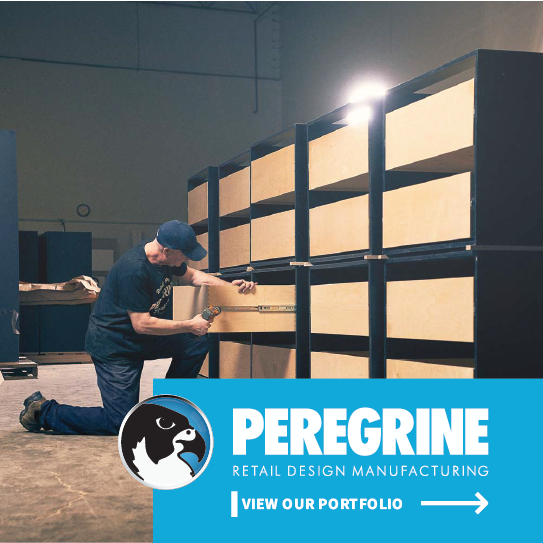How Canadian Retailers Can Get Ahead of the Customer Experience Curve: Expert
/By Michael Gilbert, EY Canada National SAP Practice Leader
The pace of change brought on by what many have been referring to as “digital disruption” is having a profound impact on the entire Canadian retail ecosystem. And although I was never one to embrace esoteric catch phrases, I’ve reluctantly trained myself to interpret this as the breakdown of traditional business models.
It’s actually not too hard to understand why this is happening when you take a moment to observe the evolving industry fundamentals. Increasingly, Canadian consumers are engaging what we would have parochially referred to as the entire retail vertical through their smartphones, seeking out tailored buying experiences that are tempered by ease of use and an insightful anticipation of their needs.
The organic growth of these new and rapidly evolving channels of engagement have, not surprisingly, created a complex maze of touch points that, in turn, generate opportunities for new types of customer experiences. Sounds like an exciting opportunity to connect with target audiences in a meaningfully, insight-driven way, right?
The story gets even more perplexing for most traditional retailers; they struggle to respond to the evolving needs of this new segment, because their fragmented systems and disconnected back-office functions don’t support channel convergence. And so, instead of an opportunity to exploit this expanding proximity and intimacy with potential customers, most organizations end up creating a negative ripple-effect on the brand and, correspondingly, business performance suffers.
But that’s not all. While most retailers struggle to retool their supply chain, several emerging upstarts have begun to effectively take over the sales enablement and fulfillment functions for the e-commerce businesses of many large iconic retailers. That means when customers are placing orders through a digital or online channel, it’s a third-party that owns the delivery of that product to someone’s front door. Effectively, aside from the branding on the portal interface, traditional retailers have very little to do with the end-to-end customer experience. It’s a startling proposition – to be on the outside, looking in on your own highly valued customer relationships.
So where do we start? I think it helps to think of your business as a “customer experience innovation factory.” This means you need to think about how you are going to create a consistently high-quality, industrialized, personalized and ever-evolving set of experiences for your customers. How do you insource critical customer interfacing functions (customer service, order fulfillment, et cetera) so that your organization can own the most important interaction points with your target market?
The answer is becoming increasingly clear: the path forward involves building the right innovation capabilities, underpinned by the required organizational “muscle memory,” all enabled by the right technology platform.
It’s an interesting philosophical shift for management and technologists alike; it involves “embracing an infinite mindset" (The Infinite Game, Simon Sinek) and not only addressing the challenge of creating compelling customer experiences in 2019, but creating a capability that will allow Canadian organizations to continue to innovate and deliver world-class customer experiences as the digital channel and the unique needs of customers continue to evolve.
Michael Gilbert is EY Canada’s National SAP Practice Leader. He is based in Toronto. For more information, visit ey.com/ca/en/agile-business-transformation










![L.L.Bean Continues Canadian Expansion with 1st Toronto Store [Photos]](https://images.squarespace-cdn.com/content/v1/529fc0c0e4b088b079c3fb6d/1603908990197-KDT3UNTEHFBFJF5FJ36N/L.L.Bean_Don_Mills_8.jpg)



![Retail-insider-NRIG-banner-300-x-300-V01-3[2].jpg](https://images.squarespace-cdn.com/content/v1/529fc0c0e4b088b079c3fb6d/1593476525034-QRWBY8JUPUYFUKJD2X9Z/Retail-insider-NRIG-banner-300-x-300-V01-3%5B2%5D.jpg)
![Retail-insider-NRIG-banner-300-x-300-V01-2[2].jpg](https://images.squarespace-cdn.com/content/v1/529fc0c0e4b088b079c3fb6d/1593476491497-W6OZKVGCJATXESC9EZ0O/Retail-insider-NRIG-banner-300-x-300-V01-2%5B2%5D.jpg)
![Retail-insider-NRIG-banner-300-x-300-V01-4[2].jpg](https://images.squarespace-cdn.com/content/v1/529fc0c0e4b088b079c3fb6d/1593476508900-TJG5SNQ294YNOCK6X8OW/Retail-insider-NRIG-banner-300-x-300-V01-4%5B2%5D.jpg)
Other news: Gap closing most mall stores, co-working space replaces Shinola store, Star Bédard rebrands, Nobis gets charitable.